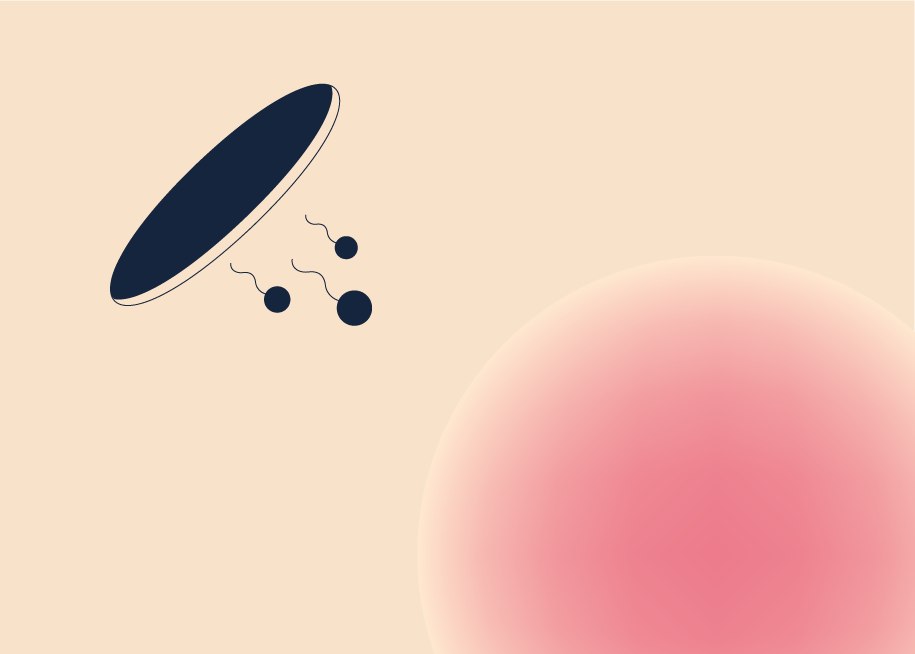Many people turn to exercise as a way to better their health. Yet, without considering the menstrual cycle, it may be much harder for individuals to achieve their health goals. At the same time, having a sense of awareness of the effect of exercise on one’s menstrual health is equally important to overall health. Beyond the positive impact of exercise on menstrual cycles, how do we identify when it is too much?
Current developments in linking hormones and exercise
This relationship, and the importance of it, has been recently recognised and publicized by elite female athletes, Many of them are now tailoring their training to account for changes across the cycle, as well as speaking out about the importance of maintaining menstruation as an athlete (1, 2). However, due to the gender bias involved in both womens’ health research and sport’s science research, this is an understudied area of scientific inquiry that is only just gaining traction (3 to 6). Nevertheless, there is strong support that the HPO Axis - aka, the system that connects our reproductive health to our brain and thus the rest of our body - is modified by exercise (7,8). Here we will explore the main topics that are supported by science thus far.
Losing one’s period - The Female Athlete Triad
The consequence of the relationship between hormones + exercise that is most discussed is the high prevalence of women developing amenorrhea when they exercise at high intensity (9). Amenorrhea is the medical term used to describe the absence of menstruation in women of reproductive age. It is defined as primary amenorrhea for women who do not experience menstrual bleeding by age 15. We define as secondary amenorrhea the cases in which women do not experience a period for three months or longer (10). Research suggests that the predominant cause of this is an energy deficit - meaning one is eating less calories compared to the energy they are expending via exercise (11,12). Highly exercising women are especially prone to developing this issue, leading to the labels of the Female Athlete Triad or Relative Energy Deficiency in Sport (RED-S) (13,14). These terms define the combination of amenorrhea, an energy deficit (burning more calories than you consume) and long term consequences such as low bone density (15,16).
While historically viewed as a problem for athletes alone, all women who restrict their caloric intake and/or exercise rigorously are at risk of developing this (17). Given that menstruation is a vital part of female health, the absence of periods can have damaging consequences. Thus, it is important to be cognizant of the potential to develop amenorrhea, as well as to always incorporate proper fuel and rest into one’s fitness routine.
Menstrual cycle, exercise and inflammation
Another way that hormones may change due to exercise is related to inflammation. Many studies demonstrate that exercise may be a useful intervention for menstrual symptoms such as primary dysmenorrhea (PD), PMS, and PMDD(18-23). Cascading hormonal changes lead to an increase of estrogen, dopamine, endorphins, and endogenous opiate peptides, which create a 'feel good' sensation. There is also evidence that exercise may suppress prostaglandins, which are the pesky fatty acids which are often responsible for menstrual discomfort (24,25).
However, as with all things, one can have too much of a good thing. Exercise is inherently inflammatory and too much may actually make menstrual symptoms worse (29). How often, how hard, and how long to exercise varies from individual to individual, so having a relationship with your body is crucial to finding the right balance for you.
Exercising across the menstrual cycle
As hormones change across the cycle, the way our body responds to exercise does too. While this is the most understudied area of research, there is much to interpret from how we understand the menstrual cycle. During the first week, female sex hormones are low while testosterone is relatively high, potentially making one prone to strength training and spacial skills (30,31). Around ovulation, our energy levels and pain thresholds are high, creating a great time to push training to the limit (32 to 34). In the second two weeks, as our temperatures rise with ovulation, our appetite increases, and symptoms kick in, exercising in heat, without proper fuel, or in conjunction with symptoms may be more difficult (35, 36). Nevertheless, by having an approach to training that involves a relationship with one’s body and one’s cycle, one can 'train up' on their body and be able to exercise and perform throughout the entire menstrual cycle.
Key takeaway
Exercise is a tool for increasing one’s health. Yet, without considering menstrual health, one may not be able to achieve this goal as effectively, or may even engage in activities that inhibit this result. Taking female physiology into account is a way to empower women to achieve their intended outcome and lead their healthiest lives. Assessing exercise through the lens of the menstrual cycle can reinforce the idea of exercising to become your healthiest self, rather than to fit a certain societal expectation. A strong case for the value of radical self-knowledge.
References:
1. Kate Rowan, Chelsea become first club to tailor training to menstrual cycles, The Telegraph, article consulted on September 21st 2020.
2. Brittney Kleyn, Menstruation cycles mapped by app helps coaches boost team performance, ABC news, consulted on September 21st 2020.
3. Sims ST, Heather AK. Myths and Methodologies: Reducing scientific design ambiguity in studies comparing sexes and/or menstrual cycle phases. Experimental physiology. 2018 Oct, pages 1309-13171
4. Bruinvels G, Burden R, Brown N, Richards T, Pedlar C. The prevalence and impact of heavy menstrual bleeding among athletes and mass start runners of the 2015 London Marathon. British Journal of Sports Medicine. 2016 May 1;50(9), pages 566-.
5. Costello JT, Bieuzen F, Bleakley CM. Where are all the female participants in Sports and Exercise Medicine research?. European Journal of Sport Science. 2014 Nov 17;14(8), pages847-51.
6. Blagrove RC, Bruinvels G, Pedlar CR. Variations in strength-related measures during the menstrual cycle in eumenorrheic women: A systematic review and meta-analysis. Journal of Science and Medicine in Sport. 2020 May 17.
7. Sokoloff NC, Misra M, Ackerman KE. Exercise, training, and the hypothalamic-pituitary-gonadal axis in men and women. InSports Endocrinology 2016, Karger Publishers (Vol. 47, pp. 27-43)
8. Warren MP, Perlroth NE. The effects of intense exercise on the female reproductive system. The Journal of endocrinology. 2001 Jul;170(1), pages 3-11
9. Shufelt CL, Torbati T, Dutra E. Hypothalamic amenorrhea and the long-term health consequences. In Seminars in reproductive medicine 2017 May (Vol. 35, No. 3, p. 256)
10. Gordon CM, Misra M, Ackerman KE, Warren MP, Berga SL. Hypothalamic Amenorrhea: An Endocrine Society Clinical Practice Guideline. In99th Annual Meeting of the Endocrine Society 2017 Apr 2.
11. Torstveit MK, Sundgot-Borgen J. Participation in leanness sports but not training volume is associated with menstrual dysfunction: a national survey of 1276 elite athletes and controls. British journal of sports medicine. 2005 Mar 1;39(3), pages 141-7.
12. Nader S. Functional hypothalamic amenorrhea: case presentations and overview of literature. Hormones. 2019 Mar 7;18(1), pages 49-54.
13. Meczekalski B, Katulski K, Czyzyk A, Podfigurna-Stopa A, Maciejewska-Jeske M. Functional hypothalamic amenorrhea and its influence on women’s health. Journal of endocrinological investigation. 2014 Nov 1;37(11), pages 1049-56.
14. Nazem TG, Ackerman KE. The female athlete triad. Sports health. 2012 Jul;4(4), pages 302-11.
15. Pollock N, Grogan C, Perry M, Pedlar C, Cooke K, Morrissey D, Dimitriou L. Bone-mineral density and other features of the female athlete triad in elite endurance runners: a longitudinal and cross-sectional observational study. International journal of sport nutrition and exercise metabolism. 2010 Oct 1;20(5), pages418-26.
16. Otis CL, Drinkwater B, Johnson M, Loucks A, Wilmore J. American College of Sports Medicine position stand. The female athlete triad. Medicine and Science in Sports and Exercise. 1997 May 1;29(5).
17. McLean JA, Barr SI. Cognitive dietary restraint is associated with eating behaviours, lifestyle practices, personality characteristics and menstrual irregularity in college women. Appetite. 2003 Feb 1;40(2), pages 185-92.
18. Prior JC, Vigna Y, Sciarretta D, Alojado N, Schulzer M. Conditioning exercise decreases premenstrual symptoms: a prospective, controlled 6-month trial. Fertility and sterility. 1987 Mar 1;47(3), pages 402-8.
19. Vishnupriya R, Rajarajeswaram P. Effects of aerobic exercise at different intensities in pre menstrual syndrome. The Journal of Obstetrics and Gynecology of India. 2011 Dec 1;61(6), pages 675-82.
20. Kannan P, Claydon LS. Some physiotherapy treatments may relieve menstrual pain in women with primary dysmenorrhea: a systematic review. Journal of physiotherapy. 2014 Mar 1;60(1), pages 13-21.
21. Brown J, Brown S. Exercise for dysmenorrhoea. Cochrane Database of Systematic Reviews. 2010(2).
22. Steege JF, Blumenthal JA. The effects of aerobic exercise on premenstrual symptoms in middle-aged women: a preliminary study. Journal of psychosomatic research. 1993 Feb 1;37(2), pages 127-33.
23. Sutar A, Paldhikar S, Shikalgar N, Ghodey S. Effect of aerobic exercises on primary dysmenorrhoea in college students. J Nurs Health Sci. 2016;5, pages 20-4.
24. Grossman A. Endorphins and exercise. Clin Cardiol 1984;7, pages 255–60
25. Petersen AMW, Pedersen BK. The anti-inflammatory effect of exercise. J Appl Physiol 2005;98, pages 1154–62.
26. Maybin JA, Critchley HO. Progesterone: a pivotal hormone at menstruation. Annals of the New York Academy of Sciences. 2011 Mar;1221(1), pages 88-97.
27. Critchley HO, Maybin JA, Armstrong GM, Williams AR. Physiology of the Endometrium and Regulation of Menstruation. Physiological reviews. 2020 Jul 1;100(3), pages 1149-79.
28. Bertone-Johnson ER, Ronnenberg AG, Houghton SC, Nobles C, Zagarins SE, Takashima-Uebelhoer BB, Faraj JL, Whitcomb BW. Association of inflammation markers with menstrual symptom severity and premenstrual syndrome in young women. Human reproduction. 2014 Sep 1;29(9), pages 1987-94.
29. Azlan A, Salamonsen LA, Hutchison J, Evans J. Endometrial inflammasome activation accompanies menstruation and may have implications for systemic inflammatory events of the menstrual cycle. Human Reproduction. 2020 Jun 3.
30. Hausmann M, Slabbekoorn D, Van Goozen SH, Cohen-Kettenis PT, Güntürkün O. Sex hormones affect spatial abilities during the menstrual cycle. Behavioral neuroscience. 2000 Dec;114(6), page 1245.
31. Sung E, Han A, Hinrichs T, Vorgerd M, Manchado C, Platen P. Effects of follicular versus luteal phase-based strength training in young women. Springerplus. 2014 Dec 1;3(1), page 668.
32. Jacobs E, D'Esposito M. Estrogen shapes dopamine-dependent cognitive processes: implications for women's health. Journal of Neuroscience. 2011 Apr 6;31(14), pages 5286-93.
33. Julian R, Hecksteden A, Fullagar HH, Meyer T. The effects of menstrual cycle phase on physical performance in female soccer players. PloS one. 2017 Mar 13;12(3). Available from:
34. Nowak J, Borkowska B, Pawlowski B. Leukocyte changes across menstruation, ovulation, and mid‐luteal phase and association with sex hormone variation. American Journal of Human Biology. 2016 Sep 10;28(5), pages 721-8.
35. De Jonge XA, Thompson M, Chuter V, Silk L, Thom J. Exercise performance over the menstrual cycle in temperate and hot, humid conditions. Medicine & Science in Sports & Exercise. 2012 Nov 1;44(11), pages 2190-8.
36. Lovick TA, Guapo VG, Anselmo-Franci JA, Loureiro CM, Faleiros MC, Del Ben CM, Brandão ML. A specific profile of luteal phase progesterone is associated with the development of premenstrual symptoms. Psychoneuroendocrinology. 2017 Jan 1;75, pages 83-90.









